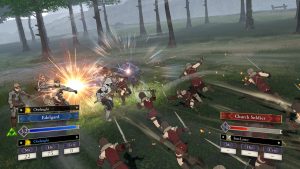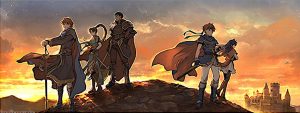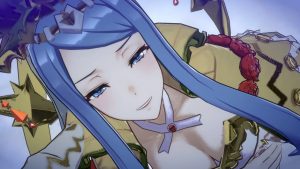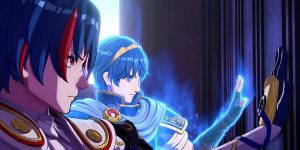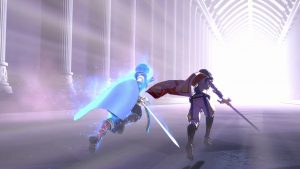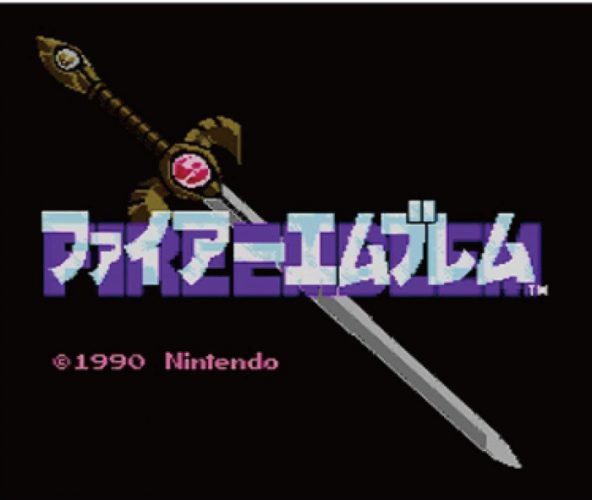
Who could have ever predicted that the blue-haired anime fencer and his fiery clone from Super Smash Bros Melee back in 2001 would go onto to become a pillar franchise for Nintendo over a decade later? After all, while anime was growing in popularity around that time, it was an art style that Nintendo generally avoided in order to appeal to their core Western fanbase. Not only that, but JRPGs were considered somewhat niche in the West. Strategy RPGs were even more so.
In fact, we have to imagine no one from Nintendo saw it coming either! Looking back on the history of Fire Emblem, even in Japan Fire Emblem was never that big of a franchise for them outside of one or two games. Somehow, it kept soldiering on until it finally hit the big time. Let’s take a look at where the series got started in our first of 4 parts covering Fire Emblem’s history!
Humble Beginnings
Not only was the original Fire Emblem: Shadow Dragon and the Blade of Light not initially a financial success, it wasn’t even supposed to be sold at all! Series creator Shouzou Kaga once stated that his original concept for Fire Emblem was submitted to Nintendo on a whim after beating Intelligent System’s own Famicom Wars (known in the West as Advance Wars). He considered it a fan project more than anything, as his idea was taking the same core gameplay of Famicom Wars but making each unit their own character so players could feel more connected to them. However, the concept caught the eye of someone at Nintendo, as they went ahead and greenlit the project.
As we mentioned, the original Famicom game wasn't a success right out of the gate. If you go back and read some of the early reviews (assuming you can read Japanese), you’ll notice that most critics complain heavily about the difficulty. This is because, in order to keep new players from feeling overwhelmed by a bunch of numbers they wouldn’t understand, the characters’ stats were not displayed. You couldn’t get a sense of what each unit could do without several replays and just feeling it out through experimentation. Plus, Fire Emblem was something people had never seen before. At the time, “Strategy RPG” was not really a term. When the game was released, they actually labeled it an “RPG simulation”. Fire Emblem was the first of its kind, which also meant people had no reference point for how to play it.
Building a Franchise
However, being a complete and total original does have its advantages. It means you have absolutely no competition as well as players’ acceptance that they won’t immediately grasp everything. There’s an unstated recognition that they’ll have to work a little harder to understand what your game is about. Because of this, Fire Emblem managed to pick up a cult following and great word of mouth.
Thus, the development of a new title called Fire Emblem Gaiden began. With this new game, the Fire Emblem team decided to experiment with a dungeon exploration mechanic. Kaga wanted to explore the world of his prior game by expanding the scope. Blade of Light only took place on the continent of Archanea, which left a ton of possibilities for new areas across the seas. Rather than continuing on from the events of the original game, he would keep it in the same timeline but move the setting to the neighboring continent of Valentia. This world-hopping would become a trend for the series.
If you were to ask the fandom, Fire Emblem Gaiden was a complete and total failure for the series. The Famicom was simply not strong enough to support the expansive, massive world the Fire Emblem team had in mind when trying to combine both tactical gameplay and world exploration. The original game was certainly a bit obtuse, but it certainly wasn’t overwhelmingly so like Gaiden’s difficult to navigate world. Sales were actually about on par with the previous game, but it left a bad taste in fans’ mouths.
The Breakout Success
Remaking your first game just 2 games in might seem like an odd tactic, but there was a surprising amount of logic to the decision. Fire Emblem Gaiden left a fandom that was mostly supported by a small but passionate circle of fans weary of the next entry, so making the same game again with updated Quality of Life features (you could finally see your stats!) and better graphics showed that the team was sticking with what worked while also providing something that could be experienced by anyone who never checked out the games on Famicom. Plus, including a fully-fleshed out story sequel that could have been sold as its own separate title enticed original players who may have passed on it otherwise. The result was 1994’s Mystery of the Fire Emblem, a game that nearly broke 800,000 copies sold in Japan. To date, it is the best selling title in the series in Japan. Naturally, a new title was greenlit.
The fourth game, 1996’s Fire Emblem: Genealogy of the Holy War, took some inspiration from a fan game that Kaga made before entering Intelligent Systems called Cosmic Fighter. While there aren’t a lot of details about Cosmic Fighter, it was apparently a small scale RPG that included secret romance options. As you might guess, it’s the “romance options” portion of this statement that we need to draw your attention to. Pairing up your characters would end up becoming a signature staple of the franchise… eventually (more on this in future articles!). But even at the time, being able to make your units fall in love, start up their own families, and then follow the adventures of their children and even their grandchildren added a certain sense of scale to the world that had never been seen before. Even if Genealogy of the Holy War was a fairly late release in the Super Famicom’s life, it did nearly break 500,000 units and is the second best selling entry in the region.
Final Thoughts
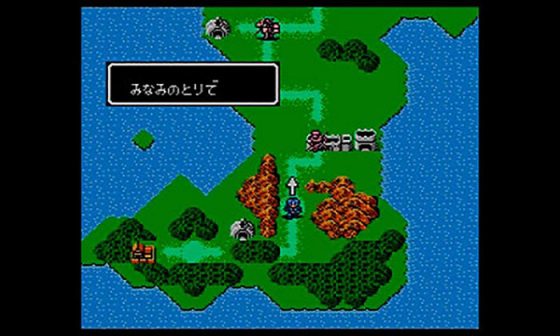
Are you noticing some similarities regarding how the series started off and when it broke out? We don’t realize it since we only first saw Fire Emblem 10 years into its lifespan, but the rebirth caused by Awakening wasn’t even the first time it had been reborn!
However, that’s getting a little ahead of ourselves. Tune in for our next part, where we’ll cover Fire Emblem’s own journey to the West!
Recommended Post
Fire Emblem: Three Houses Review
Recommended Post
The History of Fire Emblem Part 2: Release in the West
Recommended Post
Fire Emblem: Engage - Nintendo Switch Review
Recommended Post
Does Fire Emblem: Engage's Mid-Game Twist Actually Work?
Recommended Post


